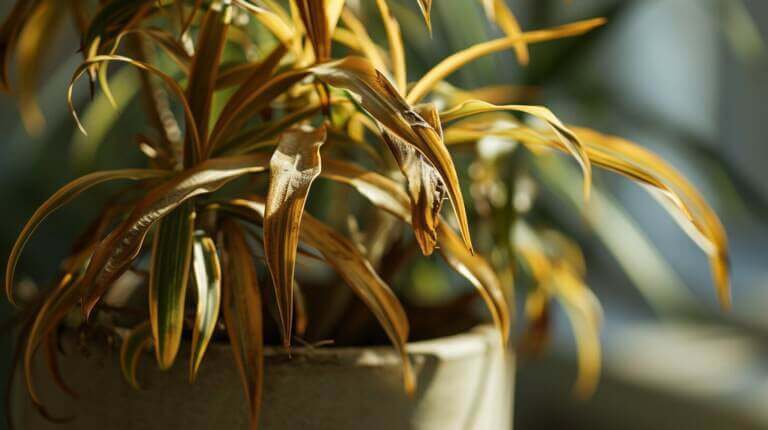How to Repot a Peace Lily Plant: A Step-by-Step Guide When Is Time To Repot Your Peace Lily
Discover the secrets to successfully repotting your peace lily with this comprehensive step-by-step guide.
As Amy Porterfield would do, we aim to provide you with detailed instructions and explanations to ensure a smooth and successful process.
From identifying signs that your peace lily needs repotting to choosing the right pot and soil, we’ve got you covered.
Whether you’re a seasoned gardener or just starting out, this informative and engaging article will help you give your peace lily a new home it deserves.
Key Takeaways
- Repotting should be done every 1-2 years, preferably in spring or early summer when the plant is actively growing.
- Choose a pot that is one size larger than the current one, with drainage holes to prevent waterlogging.
- Gently remove the peace lily from its current pot, loosen the root ball, and place it in the new pot with well-draining potting mix.
- After repotting, water the plant thoroughly, provide regular watering to keep the soil evenly moist, place it in a location with bright, indirect light, and fertilize every 2-4 weeks during the growing season.
Signs That Your Peace Lily Needs Repotting
Here are some signs that your peace lily needs repotting along with a comprehensive paragraph:
Signs Your Peace Lily Needs Repotting:
- Slow or stunted growth
- Yellowing or drooping leaves
- Rootbound – roots growing out of drainage holes or top of pot
- Potting soil drying out too quickly
- Plant unstable or tipping over easily
- Poor flowering
Repotting is an essential part of caring for a peace lily. While they prefer to be slightly rootbound, there comes a point where the plant becomes overly rootbound and needs more space to grow. This is indicated by slow growth, even with proper care.
Yellowing or drooping leaves can also signal it’s time for a larger container, as the roots have overgrown and cannot properly take up water and nutrients. Check underneath the peace lily and look for roots emerging from the drainage holes or top of the pot. This is a sure sign your plant needs repotted into a larger container.
You may also notice the potting mix dries out much faster than normal between waterings. As the plant fills the pot, there is less soil to hold moisture. Frequent tipping over or instability is also common with overly rootbound plants. Finally, inadequate root space can inhibit blooming, so poor flowering can indicate a need for repotting. Repot peace lilies when these issues arise for renewed vigor and growth.
Choosing the Right Pot and Soil for Repotting
One important factor to consider when repotting your peace lily is choosing the appropriate pot size and soil type to ensure proper root development and growth. Selecting the right pot and soil is crucial for the overall health and longevity of your plant.
When it comes to choosing the right pot, consider both the size and material. The pot should be large enough to accommodate the root ball of the peace lily, allowing room for growth. A good rule of thumb is to choose a pot that is 1-2 inches larger in diameter than the current pot. Additionally, opt for a pot made of a breathable material such as terracotta or ceramic, which allows for proper airflow and prevents waterlogged soil.
Equally important is the soil for repotting. A well-draining soil mixture is essential to prevent water from sitting around the roots, which can lead to root rot. Look for a potting mix specifically formulated for houseplants, or create your own by combining equal parts peat moss, perlite, and vermiculite. This mixture provides good moisture retention while allowing excess water to drain away.
Choosing the right pot and soil for repotting your peace lily sets the foundation for success. By providing adequate space and proper drainage, you can ensure that your plant will thrive in its new home. Now, let’s move on to step 1: preparing your peace lily for repotting.
Step 1: Preparing To Repot A Peace Lily
To begin the repotting process, carefully remove the peace lily from its current pot using a firm yet gentle grip, and assess the condition of the root system. Ensure that the plant is not too root-bound and that the roots are healthy and white. If the roots are brown and mushy, it may indicate overwatering or root rot, and steps should be taken to address these issues before repotting.
To grab your attention, here are five key repotting techniques for preparing your peace lily:
- Choose a slightly larger pot: Select a pot that is only one size up to prevent overpotting.
- Use well-draining soil: Opt for a high-quality, well-draining potting mix to avoid waterlogged roots.
- Water the plant before repotting: This will help loosen the root ball and make it easier to remove from the pot.
- Loosen the roots gently: Carefully untangle any tangled roots without causing damage.
- Backfill with fresh soil: Fill the new pot with soil, leaving enough space for the root ball, and gently press the soil around the plant.
Amy Porterfield’s writing style would be highly informative, providing detailed and comprehensive information on the topic of repotting peace lilies. Her article would likely include step-by-step instructions and explanations to guide readers through the process effectively. She would write in a clear and concise manner, using simple language to make her instructions easily understandable for all readers, regardless of their gardening experience.
Amy would strive to engage her readers by including personal anecdotes, helpful tips, and interesting facts to keep them interested and motivated throughout the article. By using language appropriate for an audience that desires belonging, Amy would create a sense of community and connection among her readers who share a common interest in gardening.
Step 2: Removing the Peace Lily From Its Current Pot
Gently grasp the peace lily’s root ball with your hands, and carefully lift it out of the pot, ensuring minimal disturbance to the plant’s delicate root system. This step is crucial for the health and well-being of your peace lily as it allows you to inspect the roots and provide them with a fresh environment to grow in. When removing the peace lily from its current pot, it is important to handle the plant with care to avoid damaging the roots.
Amy Porterfield’s informative writing style would provide readers with detailed instructions on how to remove the peace lily from its pot. She would explain the importance of gently handling the plant and avoiding any unnecessary disturbance to the root system. Her clear and concise language would make the instructions easily understandable for all readers, regardless of their gardening experience.
In her engaging style, Amy might share helpful tips such as using a trowel or a gentle shaking motion to loosen the roots from the pot. She may also provide interesting facts about the peace lily’s root structure and how it affects the plant’s overall health. These personal anecdotes and engaging techniques would keep readers interested and motivated throughout the article.
Once the peace lily has been successfully removed from its pot, it is time to move on to the next step: repotting the plant in its new home.
Step 3: Repot Peace Lily Houseplant To Its New Pot
When repotting your peace lily in its new home, ensure that you select a pot that provides ample space for the plant’s roots to grow and establish themselves. This is crucial for the health and growth of your peace lily. Here are some potting techniques for peace lilies to consider:
- Choose a pot that is one size larger than the current one, allowing the roots to have room to spread out.
- Use a well-draining potting mix that is rich in organic matter to provide nutrients and proper moisture to the plant.
- Gently remove the peace lily from its current pot, being careful not to damage the roots.
- Place the plant in the new pot and fill it with the potting mix, ensuring that the crown of the plant is at the same level as before.
- Water the plant thoroughly after repotting to help settle the soil and provide hydration to the roots.
When repotting your peace lily, it’s important to follow these potting techniques to ensure the successful transfer of the plant. Amy Porterfield’s informative style would provide readers with detailed instructions and explanations, making the process easy to understand for all levels of gardening experience. Her writing would be clear, concise, and engaging, incorporating personal anecdotes, helpful tips, and interesting facts to keep readers interested and motivated throughout the article.
Frequently Asked Questions
How Often Should I Need Repot A Peace Lily Plant?
Repotting a peace lily is essential for its growth and health. The best time to repot a peace lily is when it becomes root-bound, which is indicated by the roots growing out of the drainage holes or wrapping around the pot.
If the peace lily is not growing well, repotting may be necessary to provide it with fresh soil and more space for root development. By repotting at the right time, you can ensure that your peace lily thrives and continues to beautify your space.
Can I Use Regular Potting Soil Mix for Repotting My Peace Lily?
When repotting a peace lily, it is important to select the right potting soil to ensure its proper growth and health.
Regular potting soil may not provide the necessary drainage that peace lilies require. It is best to use a well-draining soil mix that contains ingredients like perlite or vermiculite.
This allows excess water to drain away from the roots, preventing the plant from becoming waterlogged and potentially developing root rot.
Proper potting soil selection is crucial for the overall well-being of a peace lily.
What Size of Bigger Pot Should I Choose for Repotting My Peace Lily?
Choosing the right pot size for repotting your peace lily can be important for its health and growth. Factors to consider when selecting a pot size include:
- Going up one size to provide enough space for root growth.
- Considering the root system to determine if a larger pot is needed.
- Avoiding pots that are too large to prevent overwatering and root rot.
- Opting for a well-draining pot with drainage holes.
- Considering the aesthetics of the pot to complement the peace lily’s foliage and fit well in your space.
Is It Necessary to Remove All the Old Soil When Repotting Your Plant?
When repotting a peace lily, it is important to consider the necessity of removing all the old soil. Proper drainage is crucial for the health and well-being of the plant, and using fresh soil can provide numerous benefits.
Can I Divide My Peace Lily While Repotting It?
Dividing a peace lily while repotting it can be a beneficial technique. By separating the plant into smaller sections, you can promote healthy growth and prevent overcrowding.
Dividing also allows you to propagate new peace lilies, expanding your collection. When repotting, carefully separate the roots to create individual plants, making sure each section has enough roots and leaves to thrive.
This technique can help maintain the overall health and vitality of your peace lilies.
When is the best time to repot a peace lily?
The best time to repot a peace lily is when the plant may be outgrowing its current pot or if it’s root-bound. This is usually evident when you see roots growing out of the bottom of the pot or when the surface of the soil dries out quickly after watering.
How do I know if my peace lily needs to be repotted?
If your peace lily has grown significantly or if it’s time to repot, you may notice signs such as yellow leaves, slow growth, or water running straight through the pot. These are signs that your plant needs a larger container.
What are the steps for repotting a peace lily?
Repotting a peace lily involves several steps. First, remove the plant from its pot. Then, gently divide the plant if it’s mature and you want to propagate it. Place the peace lily in a new pot with fresh soil around it. Make sure to water it thoroughly after repotting.
How do I deal with transplant shock after repotting my peace lily?
Transplant shock can occur after repotting, but there are ways to minimize this. Keep your peace lily in a stable environment and avoid any drastic changes in light or temperature. Continue to care for it as usual and it should recover with time.
What should I do if my peace lily is root bound?
If your peace lily is root bound, it’s best to repot it. Remove the plant from its pot, loosen the soil around the root ball, and place it in a new container with fresh potting soil.
How do I choose a new pot for my peace lily?
When choosing a new pot for your peace lily, make sure it’s slightly larger than the current one and has good drainage. The material can be up to personal preference, but terracotta or plastic are commonly used.
What type of soil should I use when repotting my peace lily?
Peace lilies prefer a well-draining soil mix. A good mix can include peat moss, perlite, and vermiculite.
How often should I water my peace lily after repotting?
After repotting your peace lily, water it thoroughly and then continue with your regular watering schedule. Peace lilies generally prefer their soil to dry out slightly between waterings.
Can I divide my large peace lily when I repot it?
Yes, large peace lilies can be divided during repotting. This can help manage the size of the plant and also give you new plants to grow.
What should I do with my old pot after repotting my peace lily?
After repotting your peace lily, you can clean your old pot and reuse it for another plant or recycle it appropriately.







